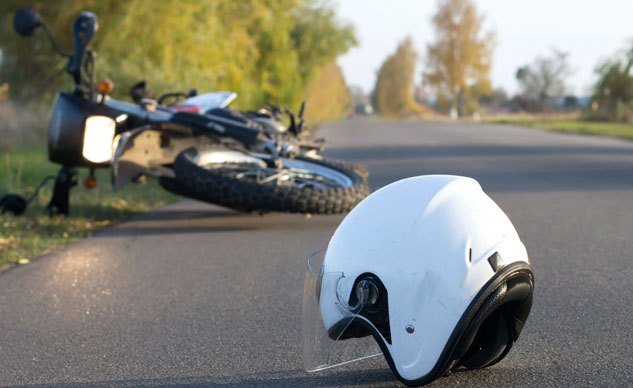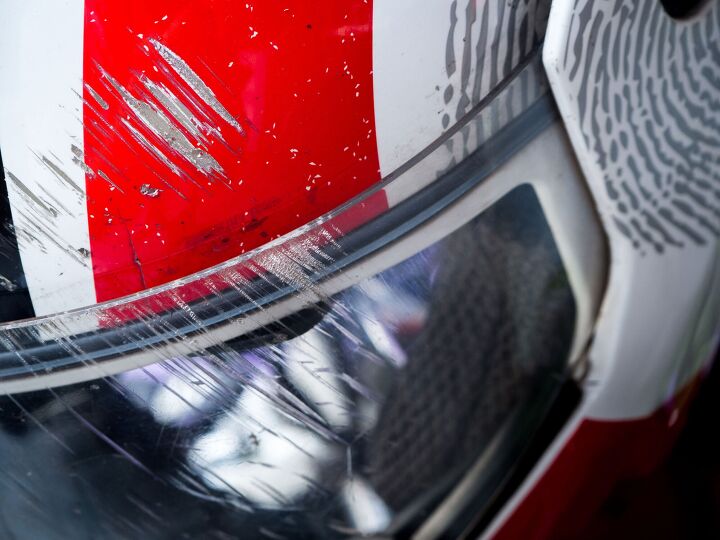
 |
|
|
#1 |
|
All the news that's fit to excerpt
Name: newsie
Location: who knows?
Join Date: Jun 2008 Motorcycle(s): only digital replicas Posts: Too much.
|
[motorcycle.com] - Tips For Administering Motorcycle First Aid
 The worst-case scenario has just happened: someone has crashed their motorcycle. Youíre the first (and possibly only) one on the scene, and not knowing what condition the rider is in, it goes without saying that every second counts. Do you know what to do? What follows are some general tips to follow in case youíre put in the scenario to potentially save a life. In this lawsuit-crazy world we live in we also have to clarify the Motorcycle.com staff are NOT medical professionals, and everything mentioned here is superseded by proper medical training. Which brings up another point Ė if you donít already have basic medical training, get it. With that out of the way we need to establish some basics. If you have cell phone reception, call 911 immediately. Otherwise, keep an eye out for others who might be able to get help. Flag them down, if possible, and instruct them to get the proper authorities right away. In the meantime these critical moments are vital for survival. Key things to look out for are bleeding, breathing, and possible spine injuries. So what can you do? Assess the situation Embed from Getty Images Try to keep cool and stay calm. Then check to see if the rider is in immediate danger: Are they in the middle of oncoming traffic? Is the motorcycle on top of them? Worse yet, are they trapped under burning wreckage? This is a long way to say Ė if the downed rider can be left where they are, then leave them there. The reason is because you want to… Protect the neck In these initial moments, you donít know if the rider has any head or neck trauma. For as important as the neck and spine are, itís amazing how delicate both are. One wrong move, no matter how well intended, could be the difference between recovery and paralysis (or worse). Unless the rider is in immediate danger, itís best to leave them be until the pros arrive. This includes leaving their helmet alone.  Photo by: RATT_ANARACH/Shutterstock.com Photo by: RATT_ANARACH/Shutterstock.comCheck for breathing Danger can also present itself in the form of restricted breathing. Once youíve established that the rider is fine where they are, make sure theyíre breathing. If theyíre having trouble, then carefully remove the riderís helmet. This is the exception to the ďleave helmet aloneĒ rule. Many modern helmets have easily removable padding denoted by colored tabs (usually yellow or red) specifically for emergency personnel to be able to remove the helmet with minimal movement of the head. Does this hurt? If the rider is stable then you can start assessing injuries. Ask for his or her name. Followed by what day it is and where they are. This will tell you a lot Ė if the rider responds lucidly, thatís obviously a good sign. If thereís no response, or a strained response, these are obvious signs of more damage. Ask if they feel any pain, and especially if they are less lucid, use the light touch test throughout the body to assess for broken bones or possible internal injuries. If there are visibly broken bones, theyíll scream in pain when you touch it. If they donít, you know somethingís wrong. Try and immobilize the break as best as possible. Thereís no need to straighten the limb, but do what you can to keep it from moving (use a t-shirt as a sling for a broken arm, for example) Keep a mental note on all of the above conditions so you can relay this to the medical team when they arrive. Lastly, if thereís bleeding stemming from a laceration or broken limb try and stop it however possible, using your belt or shirt as a tourniquet, if necessary. If significant blood has already been lost, lay the person down and raise their feet Ė this will help encourage the weakened heart/body to sacrifice the feet to move much needed blood towards the brain. With this loss of blood, itís also vital to keep the body warm. Jackets are the obvious first choice, but if there are blankets or wraps available, use those too. At this point the body is going into shock. Thereís not much roadside aid you can give past this point beyond what was just outlined, but these quick actions might keep the person conscious just that little bit longer until help arrives. Body regulation This applies even if you havenít crashed, but do everything possible to regulate body temperature. Drink plenty of fluids in hot weather and stay warm in the cold. This especially applies to an injured rider. We covered keeping the rider warm above, but in hot weather you want to avoid the injured rider getting even worse due to heat. Find (or make) shade, if possible. Give the rider liquids, too. Damp cloths will also help keep the rider cool. Heat stroke is the enemy here. At worse the body will essentially shut down, and at that point the last hope is… CPR You hope it never comes down to this, but desperate times call for desperate measures. If you need to administer CPR be careful with the riderís neck. If you havenít taken CPR training in a while (or ever), note new guidelines suggest simply performing chest compressions is as effective as breathing into the patientís mouth. Stayin alive First and foremost, get proper medical training in case you are ever put in a situation where you need it. From there itís important to remember that, as the person administering help, you need to keep calm, too. This is a lot to chew, so weíve found a helpful acronym on the Google from The Motorcycle Council of New South Wales in Australia to help you remember. It goes like this: D – Danger: Check for any danger to yourself, the victim, or others. R – Response: Is the person responsive to talking and touching? S – Send for help: Call first responders or otherwise assign someone else to do it. A – Airway: Clear and open the airways. B – Breathing: Look, listen, and feel for breathing. Administer CPR, if needed. C – CPR: Only compressions. No mouth-to-mouth needed. The post Tips For Administering Motorcycle First Aid appeared first on Motorcycle.com. Click here for full story...
__________________________________________________
I'm a bot. I don't need no stinkin' signature... |
|
|

|
 |
 Similar Threads
Similar Threads
|
||||
| Thread | Thread Starter | Forum | Replies | Last Post |
| [motorcycle-usa.com] - See Why We Ride for Free, Aid I Am Sturgis | Ninjette Newsbot | Motorcycling News | 0 | May 14th, 2015 08:41 PM |
| Motorcycle First Aid Question | Road Dawg1 | General Motorcycling Discussion | 29 | April 25th, 2015 09:37 AM |
| Emergency Motorcycle First Aid and Safety Kits | Jiggles | General Motorcycling Discussion | 56 | September 24th, 2014 04:29 PM |
| [motorcycle.com] - Suzuki Increases Earthquake Aid | Ninjette Newsbot | Motorcycling News | 0 | March 24th, 2011 11:40 AM |
| [motorcycle.com] - Yamaha Increases Earthquake Aid | Ninjette Newsbot | Motorcycling News | 0 | March 18th, 2011 12:00 PM |
|
|